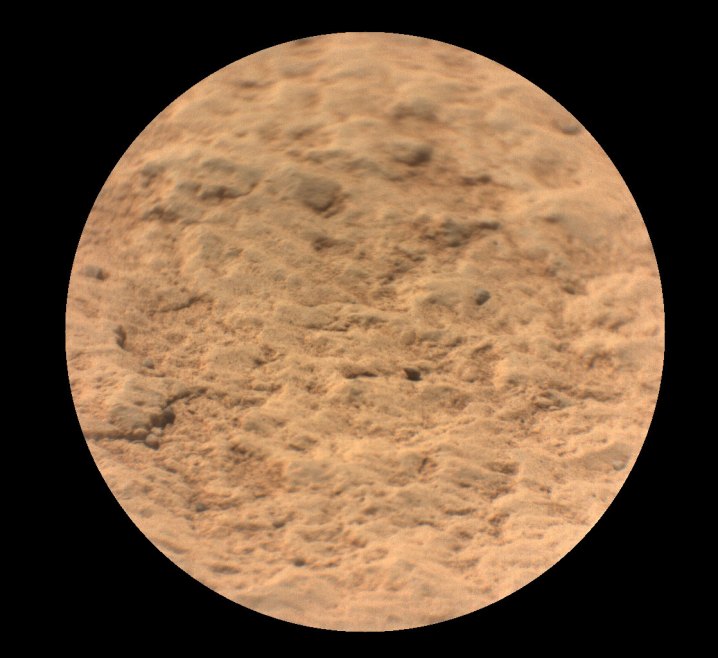
With NASA’s newest rover Perseverance safely landing on Mars last month, it has now begun its science operations. It recently took first readings using one of its instruments, SuperCam, which is located on the top of the rover’s mast. SuperCam contains a high-resolution camera, a microphone, and a high-powered laser for performing spectroscopy on rock samples to see what they are composed of.
SuperCam was used to snap a close-up image of a rock, shown above. The rock target is named “Máaz,” from the Navajo language, which means “Mars.” The data was sent from the rover to a group of French laboratories at the Centre National d’Etudes Spatiales (CNES)
“It is amazing to see SuperCam working so well on Mars,” said Roger Wiens, the principal investigator for Perseverance’s SuperCam instrument from Los Alamos National Laboratory in New Mexico, in a statement. “When we first dreamed up this instrument eight years ago, we worried that we were being way too ambitious. Now it is up there working like a charm.”
The SuperCam instrument also includes a microphone, which can be used to measure the sound of the laser entering a rock sample. This tells researchers information about factors like how deep the laser is penetrating and the hardness of the rock.
It also means that the microphone can be used to record the sounds of Mars, including the sound of the wind which was recorded just after the rover landed and while the mast was still folder down. NASA has now shared three audio clips recorded by SuperCam. “The sounds acquired are remarkable quality,” said Naomi Murdoch, a research scientist and lecturer at the ISAE-SUPAERO aerospace engineering school in Toulouse. “It’s incredible to think that we’re going to do science with the first sounds ever recorded on the surface of Mars!”
“I want to extend my sincere thanks and congratulations to our international partners at CNES and the SuperCam team for being a part of this momentous journey with us,” said Thomas Zurbuchen, associate administrator for science at NASA Headquarters. “SuperCam truly gives our rover eyes to see promising rock samples and ears to hear what it sounds like when the lasers strike them. This information will be essential when determining which samples to cache and ultimately return to Earth through our groundbreaking Mars Sample Return Campaign, which will be one of the most ambitious feats ever undertaken by humanity.”



